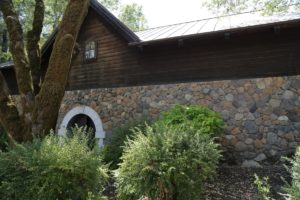
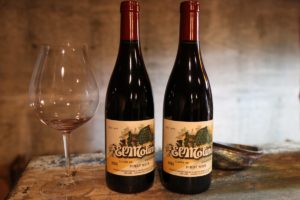
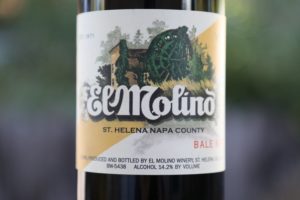 El Molino Winery is located on the site of an old ghost winery founded in 1871. This is one of Napa Valley’s most special and historic wineries. When referring to Napa Valley wineries built in the early 1870s or before, this list is an extremely exclusive one. As a result, the original El Molino Winery was one of the earliest wineries founded in Napa Valley. The winery was completely restored in 1981.
El Molino Winery is located on the site of an old ghost winery founded in 1871. This is one of Napa Valley’s most special and historic wineries. When referring to Napa Valley wineries built in the early 1870s or before, this list is an extremely exclusive one. As a result, the original El Molino Winery was one of the earliest wineries founded in Napa Valley. The winery was completely restored in 1981.
This site is closely tied to the historic Bale Grist Mill located slightly to the north. A gentleman by the name of Florentine Erwin Kellogg moved to California in 1846, just crossing the Sierra Nevada mountains as the snow was starting to fall, crossing a few days before the Donner Party became trapped by the early snowstorms that year. He moved to what is now the site of El Molino Winery, taking work ‘next door’ at the Bale Grist Mill – creating all the iron work on the original grist mill in 1846 and 1847 for its namesake, Dr. Bale. This water-powered mill built in 1846 was originally used for grinding corn and wheat into flour – it is one of only two water-driven mills still in existence west of the Mississippi River. Other early mills in Napa Valley included Star of the Pacific Mill in Yountville and the Chiles Grist Mill in Chiles Valley. Mill stones from the Pacific Mill are displayed in Yountville and the millstone from Chiles Grist Mill is displayed in the Bale Grist Mill.
Napa Valley was not planted to many grapes in the 1840s but in 1848, Kellogg planted 2 acres of Mission grapes on his land (some of the early vineyard plantings in the valley). George Yount (the namesake of Yountville) is credited with planting the first grapes in the Napa Valley in 1838/1839 near a small town which was at that time called Sebastopol, later changed to its current name, Yountville.
For more information about Florentine Kellogg see our profiles on this site of Canard Winery and Bergman Estate.
In 1867 the property was purchased by Captain W. Sayward; his family roots in the U.S. date back to 1637 when a Henry Sayward immigrated to the Massachusetts colonies. Captain Sayward mined for gold in California in 1852, returned to the east coast and built a bark (3-mast sailing vessel) and in 1854 navigated it around Cape Horn to San Francisco. Upon arriving in San Francisco he sold the ship and worked in the lumber business in Peugeot Sound.
After two years he settled in San Francisco. For the better part of the 1860s he worked in coasting trade until a journey under his command from Liverpool to the east coast of the U.S. resulted in the abandoning of his ship during a storm and the lucky rescue from another ship. His sailing days were finished and he settled in St. Helena during the latter part of the decade. In 1881 he moved to Southern California after selling property to Josephine Tychson who became one of the first woman winemakers in Napa Valley; reference Freemark Abbey.
In 1871 Colonel and Reverend William Whittingham (W.W.) Lyman Sr., an Episcopalian minister (like his father Theodore Benedict Lyman) purchased the Bale Grist Mill and surrounding property from Captain W. Sayward. Like Sayward’s family roots, the Lyman’s roots date back to early settlements in the U.S. His relative Richard Lyman immigrated to the U.S. with his family in 1631, also settling in Massachusetts.
The winery was remarkably completed in time for that year’s harvest. By 1874, according to an article in The Napa Valley Register, Lyman’s cellar had a capacity of 50,000 gallons but he only produced about 15,000 gallons in 1873 and 4,000 gallons in 1879.

 Lyman Park, St. Helena[/caption] And he cleared land both on the hillsides and the valley floor and planted grapes; he consulted winemaker Charles Krug on which varieties to plant. Vineyards in those days up valley were not planted to the obligatory Cabernet Sauvignon that Napa Valley is now known for. The family grew both table grapes and wine grapes – with the wine varieties planted to Green Hungarian, Burger, Golden Chasselas, Muscatel and the red grapes mostly to Zinfandel.
Lyman Park, St. Helena[/caption] And he cleared land both on the hillsides and the valley floor and planted grapes; he consulted winemaker Charles Krug on which varieties to plant. Vineyards in those days up valley were not planted to the obligatory Cabernet Sauvignon that Napa Valley is now known for. The family grew both table grapes and wine grapes – with the wine varieties planted to Green Hungarian, Burger, Golden Chasselas, Muscatel and the red grapes mostly to Zinfandel.
An article in The St. Helena Star dated Feb 25, 1875 indicates he had orange trees growing on the property and they were never affected by frost, and “produces as luxuriantly as those in Los Angeles County”. English walnuts, figs, peaches and apples were also growing here. The raised elevation of this site above the valley floor proves helpful during times of intense cold. In 1878 he was a charter member of the St. Helena Odd Fellows. In 1880 Lyman was nominated and later that year, elected as Supervisor of the 3rd district. In 1882 he helped form the Bank of St. Helena and was elected to their first board of directors a role he would serve for the rest of his life. In 1909 he was elected President of the Bank of St. Helena. He passed away at age 71 in 1921.
In 1923 his widow Sarah arranged so that the Native Sons & Daughters would preserve the mill and make it available for the general public to visit. The State of California took over the management of the mill in 1974. This same year she donated her portion of land housing what was Turner Hall to the city of St. Helena; the hall used to house a theater, dance hall, gym and the high school with classes held here from 1896 until 1912. The building was abandoned during World War I and eventually torn down to become the site of Lyman Park.
Bale Grist Mill
With the help of Chinese workers, in 1897 a tunnel was hand-dug into the side of the hillside used for aging wines. Part of this tunnel eventually collapsed; this portion has since been restored and leads from one of their barrel rooms to the home above. The winery operated until around 1910 before closing due to phyloxxera infestation in their vineyards. Before closing they were bottling wines labeled as Zinfandel, Riesling, Napa Claret and Bale Red. And after the winery closed, grapes continued to be sold to other wineries in the region.
And during Lyman’s ownership, the majority of the wine on site was produced as bulk products and transferred to Napa Wine Company in Oakville for bottling and shipment to San Francisco. Lyman was an investor in Napa Wine Company. But some of the wine was bottled as El Molino Wine Company.
Lyman’s son W.W. Jr., (Jack) Lyman was born and raised on the property, taught at St. Helena High School in the 1920s and later taught English and Celtic languages at UC Berkely and at Los Angeles College. He published three books during his career. His wife was the poetess Helen Hoyt. Jack was the head of acquisitions for the Napa Valley Wine Library in the early 1960s. He left his memoirs to the Bancroft Library at UC Berkeley. Jack passed in 1983 at the young age of 98.
Lyman family plot, St. Helena Cemetery
In 1945 the property was purchased by Van Allen Haven and his wife Nancy (she was originally from New Zealand) from W.W. (Jack) Lyman. The Haven’s converted the old winery building into their residence over a span of several years in the early 1960s. Nancy amassed an impressive collection of art in their home including rare Japanese prints. Remnants of their Asian influenced patio and garden can still be seen. She served as the first female president for the Napa Valley Wine Library from 1975-1976 and also used to assist with public relations including sales and marketing for Louis Martini Winery. Some of their annual Wine Library tastings in the late 1960s and early 1970s attracted upwards of 1200 people. The property was used at times for events/receptions including for the Napa Valley Wine Library and a fundraising event for Senator Pete Behr.
Van Allen passed in 1969; Nancy tragically passed away in August of 1976 during a fire which destroyed the upper story of the home above the winery and burned into the lower level. The fire was deliberately set and her death was treated as a homicide by the Napa County Sheriff’s Department due to evidence discovered of fluid doused throughout Nancy’s bedroom and then lit on fire.
In 1978 Reginald (Reg) Oliver and his wife Marie purchased the winery and the surrounding land from the Havens Estate – Nancy was Reginald’s aunt (his mother’s sister). In nearly all cases when a winery is put up for sale the new owners are not family related. The California Department of Parks and Recreation was trying to purchase this property as part of plans at that time to develop a new parking lot and picnic area for the nearby Bale Grist Mill. Fortunately they were able to move forward with these plans using other nearby parcels the state had previously purchased.
Reg was born in Berkely but was raised in Los Gatos. He visited the Napa Valley and this property occasionally with family in his youth. While in his teens he helped build a sparkling wine cellar at Paul Masson Winery in Saratoga – now known as the Mountain Winery. He moved to New York in 1961 and became a security analysist on Wall Street and a year later began what would be a 30 year career at Pershing & Co. where he was the Director of Research and a Partner. He was sought out by media for his views on investing including making appearances on Wall Street Week with Louis Rukeyser. We fondly remember sitting in on some ofRukeyser’s TV shows in the 1980s with both our father and our grandfather, who were both heavily invested in the stock market. Rukeyser’s face is one we will forever associate with stocks and bonds.
Finance was a big part of Reg’s heritage; his great-great-grandfather was a founding member of the San Francisco Stock and Bond Exchange in 1882 (he later served as its chairman). In 1956 it merged with the Los Angeles Oil Exchange to become the Pacific Stock Exchange. His grandfather oversaw Letts-Oliver Investment Co. In 1980 Reg founded RBO & Co Investment Management.
RBO & Co is still very much active, based in St. Helena, the company offers a variety of wealth management services. After Reg passed in 2005 his son John Oliver (Jack) took over as the Managing Partner, a role he remains in today.
Reg moved his family from New York City to this rural property in 1981 and soon began making home wine. In fact his home wine earned several accolades at the Napa Town & Country Fair’s Home Winemaking Competition including second place in 1982 for a Zinfandel and first place in 1985 for a Sauvignon Blanc. In the 1980s there were a number of local winemakers who entered these competitions including those who would have long careers in winemaking in Napa Valley such as Kent Rasmussen, David Mahaffey, and Michael Havens.
From 1995 through 1998, like his aunt before him, Reg was also president of the Napa Valley Wine Library Association.
The first wine produced commercially from the present-day El Molino Winery was a Pinot Noir in 1987 and the first Chardonnay was in 1988. This was nearly 80 years since the last wine was produced commercially on the property. Reginald also purchased the 67.43-acre Star Vineyard in Rutherford and collaborated at the time in this property with winemaker Ric Foreman and vineyard manager David Abreu; the name of this vineyard was proposed by Marie.
In addition, he owned the 8.20 acre Revilo Vineyard near Meadowood Resort; its name came from spelling Reg’s last name of Oliver backwards. After Reginald passed away in 2005 his daughter, Lily Oliver (born in Manhattan) and her husband Jon Berlin (from South Africa) took ownership of Revilo Vineyard and El Molino Winery; Star Vineyard is a holding of the family owned RBO & Co., Investment Management. Both Lily and Jon continue to oversee the property and share the winemaking duties. Jon has an extensive background of making wine at a number of wineries, both domestically and abroad.
Star Vineyard in Rutherford is located about 25 minutes south of El Molino Winery behind La Luna Market on Rutherford Cross Road. Rutherford tends to be Cabernet Sauvignon country but remarkably, their 68 acre vineyard is planted to Chardonnay and Pinot Noir (in addition to the obligatory Cabernet Sauvignon). Reginald chose to plant Pinot Noir after talking to André Tchelistcheff who informed him that the site of the Star Vineyard used to be planted to Pinot Noir in the 1930s. And in the 1940s Andre produced Pinot Noir from a nearby site that was known as BV No. 1. The first Chardonnay was planted in 1978 and the Pinot Noir in 1991. El Molino only sources a small section of the overall vineyard – the rest of the grapes are sold to area wineries.
The winery itself is located off of Highway 29/128 (north of the town of St. Helena) via a short, gated driveway. Despite being so close to Highway 29/128, once you reach the winery it feels like you are really in the country as the winery borders more than one thousand acres of native forestland owned by the state of California (Bothe State Park). The property originally was referred to as the Lyman Ranch and totaled some 1,000 acres; today the El Molino property is only 7.54 acres. The last of original Lyman Ranch still in the Lyman family is merely 2 acres owned by Chaovarii Lyman (originally from Bangkok, Thailand), the widow of W.W. Lyman’s grandson Thomas Lyman. The residence on this property is referred to as the Kellogg-Lyman House.
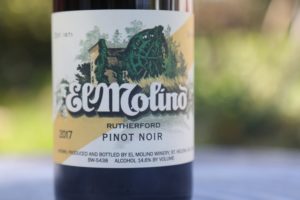
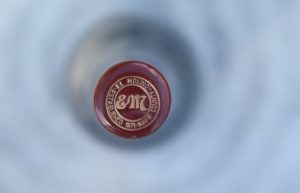
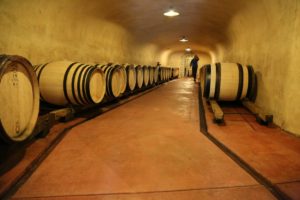 The name El Molino in Spanish means “The Mill” which makes sense considering their proximity to the Bale Grist Mill. And their wine label is from the original design from the winery’s first vintage back in 1871 (featuring an image of the grist mill). An original El Molino bottle of wine dating from around 1900 is displayed on site and still contains the original label.
The name El Molino in Spanish means “The Mill” which makes sense considering their proximity to the Bale Grist Mill. And their wine label is from the original design from the winery’s first vintage back in 1871 (featuring an image of the grist mill). An original El Molino bottle of wine dating from around 1900 is displayed on site and still contains the original label.
They focus on only two Burgundian varieties; Chardonnay and Pinot Noir, both varieties that Lily’s father enjoyed drinking and making. They employ a minimalist approach to wine making including using small tanks and partial whole cluster fermentation with lignified stems – which means they are brown and also “ripe”, so there are no “green” characteristics in the wine. And also foot treading for the initial punch-downs and fermenting using yeasts already present on the grapes when they come into the winery; they do not inoculate with commercial yeasts. Their Chardonnay does not go through any or very little malolactic fermentation.
And highly unusual for a winery in Napa Valley is all their wines are bottled and cellared on the property until they are released.
Chardonnay and Pinot Noir are not usually found in the Rutherford appellation and in fact, their Pinot Noir grapes are in the only vineyard that we know of planted to this variety in Rutherford. Aside from the economics of growing Pinot Noir versus Cabernet Sauvignon in Rutherford, perhaps more wineries would start to take note of using Rutherford for premium Pinot Noir after trying El Molino’s bottlings.
Their early Pinot Noir bottlings were not from Rutherford but were from Carneros.
Select Wines
Chardonnay
The 2018 El Molino Rutherford Chardonnay is deep gold in color; the bouquet offers layers of ripe fruit aromatics including of dried mango, yellow pineapple, orange blossom, along with a sweet caramel, vanilla and other dessert spice influences – which continues to linger. Also, some toasted notes of oak (which dissipates as the wine breathes) and popcorn butter. Sports a very appealing bouquet. This is a rich and very flavorful showing across the palate with flavors of melon and pineapple. Long lingering on the finish with a crème Brule and a lemon drop nuance. There is also a pleasing slightly oily quality to the mouth feel. Only about 10% of the total wine went through secondary fermentation. This wine doesn’t necessarily need to be paired with food as it drinks quite well by itself. Most people drink wines of this variety fairly young; this one has the stuffing to potentially develop additional complexities and continue to evolve in a good way with several years of age. Was barrel fermented and then barrel aged sur-lie for 11 months. 850 cases were produced.
Pinot Noir
The 2017 El Molino Pinot Noir Rutherford is a very thoughtfully made wine from this variety including 10 different clones of Pinot Noir, all picked separately while some were co-fermented. 70% of the wine was whole cluster fermented. The wine is medium to deep ruby in color with darker fruit aromatics including plum, dried berry, raspberry, dried rose petal and a noticeable sandal wood, cedar box and an earthy influence. As the wine continues to breathe, shows hints of mocha on the bouquet and more fruit. The palate shows less influence from the oak than the bouquet with flavors of red cherry, currant and dried berries. A fruit sweetness and an herbal note linger for some time on the finish. Flavorful until the very end – with the fruit flavors persisting but with a very light influence of tannins. 600 cases produced.

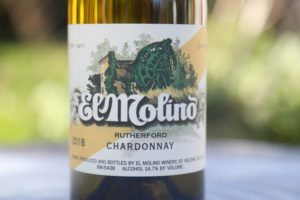 The 2005 El Molino Pinot Noir shows a color consistent with previous vintages of this wine. It is medium to dark red with nuances of cherry on the bouquet followed by additional cherry notes on the palate. This is a rich, layered in flavor Pinot Noir with appealing spices and accompanying structure anchoring the very long finish.
The 2005 El Molino Pinot Noir shows a color consistent with previous vintages of this wine. It is medium to dark red with nuances of cherry on the bouquet followed by additional cherry notes on the palate. This is a rich, layered in flavor Pinot Noir with appealing spices and accompanying structure anchoring the very long finish.
One-Offs
Occasionally but rarely, El Molino will produce a one off or limited production bottling. For example, in 2012 they released a Pinot Noir blended with Sonoma Coast grapes and grapes from the Star Vineyard. The acidity from the cooler weather Sonoma Coast grapes complemented the structure from their Rutherford Pinot Noir. And in 2020 Lily and Jon’s daughter suggested they produce a Pinot Noir blended with a Cabernet Sauvignon. They took her advice and created an unusual 50% blend of Pinot Noir from the Star Vineyard in Rutherford and 50% Cabernet Sauvignon from the Revilo Vineyard in St. Helena.
The 2020 Bale Red is medium to dark ruby in color; the bouquet is both generous and simultaneously restrained; it offers scents of dark raspberry, bramble, red plums, suede leather, old cedar box, a light note of crushed dark pepper and dark chocolate. The Cabernet Sauvignon perhaps dominates the aromatics more than it does the palate, although its presence is clearly felt on both. This wine offers red-fruited flavors of plum, cherry, cranberry and pomegranate. Crunchy, juicy and refreshing its acidity gives it a pleasing lift, especially mid palate through to the finish. Medium bodied, the lightly grainy but integrated tannins pace the fruit on the bright lit finish. This wine lingers with a note of dried tobacco leaf and dried herbs. The Pinot Noir and Cabernet Sauvignon were kept separate for 18 months until being blended together into 50% new and 50% once-used barrels and then aged for an additional 7 months before bottling. In a blind tasting we would never guess this varietal blend. The only other blend of these two varieties we have ever come across in Napa Valley was a Pinot Noir blended with a small amount of Cabernet Sauvignon by Patland Vineyards.
The El Molino wines drink nicely when young, but they also age well; Jon told us that he enjoys drinking both their wines after about 10 years.
—
The winery sees guests on a limited basis (built around their schedules). A tour/tasting typically takes 45 minutes to an hour. Visitors will be shown their two separate wine making/storage facilities, one dedicated to the Pinot Noir and the other one for the Chardonnay. As of the time of this review, the total production is about 1200 cases of each wine. They maintain a mailing list; if you enjoy excellent Pinot & Chardonnay, we encourage you to signup via their website to be notified of releases.
And El Molino Winery in Napa Valley is in no way connected or should be confused with Bodega El Molino, a wine brand produced in Mendoza, Argentina.Locally select vintages may be found at ACME Wines in St. Helena or the Oakville Grocery. A number of online retails also carry both their Chardonnay and Pinot Noir. For more information about this treasured and historical estate, to schedule a visit or to purchase wine including both current release and slightly older vintages, visit: www.elmolinowinery.com






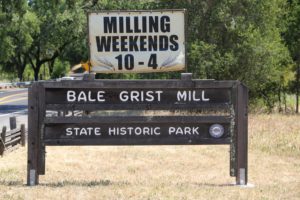
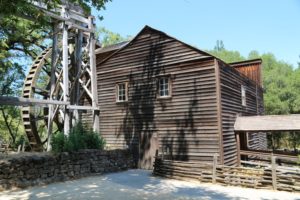
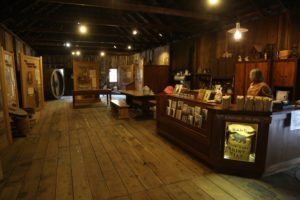
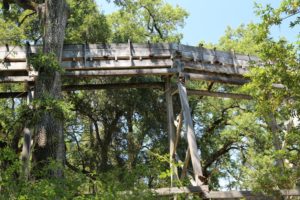
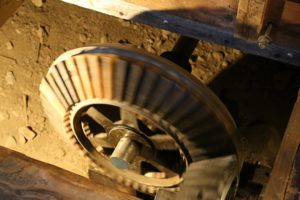
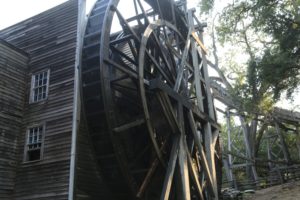
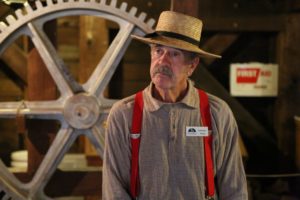
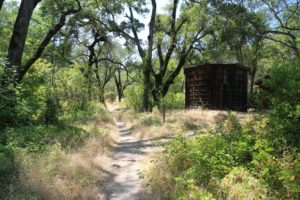





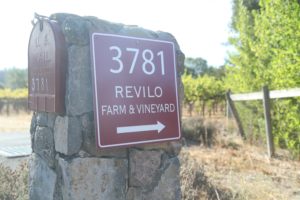
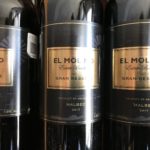
Leave a Reply